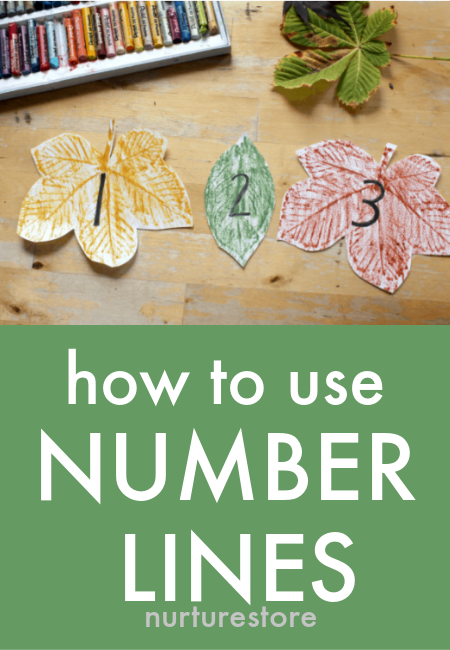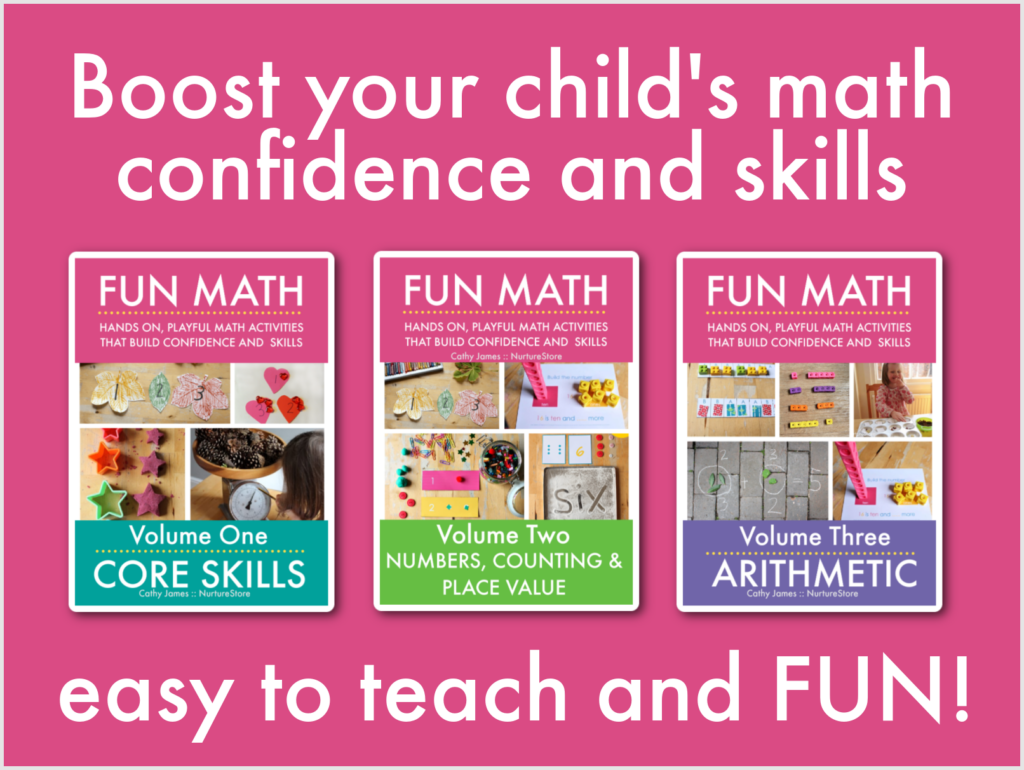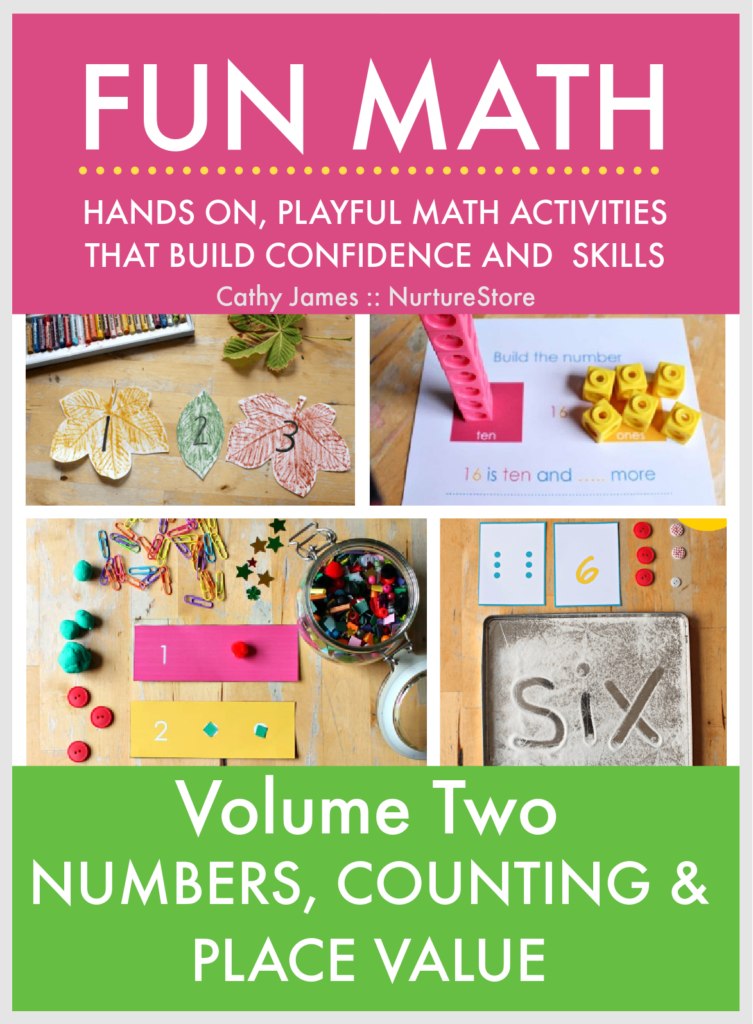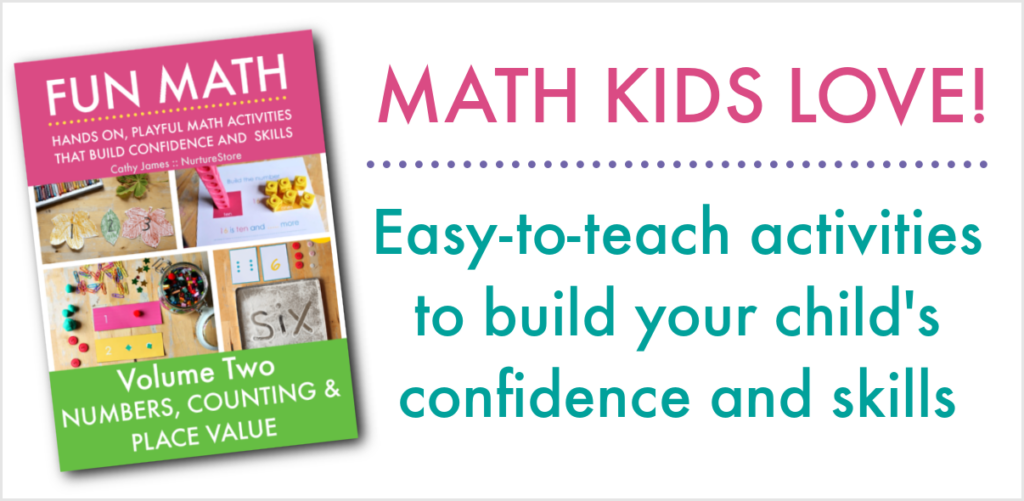Learn how to use a number line with your children to boost their understanding of numbers, patterns, arithmetic and more.
Number line ideas for math lessons
Every class and home should have a number line! They are easy to make and invaluable as a visual aid for math learning.
Taking ideas from our Fun Math curriculum, let’s talk about how to make a number line and all the ways you can use a number line with your children to develop their math skills, confidence and expertise.
Magic Fun Math lessons!
Fun Math is an easy to teach, highly effective math curriculum based on play and hands-on learning.
All the lessons are designed to be fun and memorable, so children enjoy their lessons and feel confident.
The lessons are easy for teachers and parents to use, in class or at home.
These are the magic lessons where children really see, understand, and can apply math concepts. They are especially suited to children who don’t like math, lack confidence, don’t understand math the way they are currently being taught, or just want to play.
SEE MORE AND TRANSFORM YOUR MATH TEACHING HERE.
What is a number line?
A number line is an essential piece of math kit and helps children visualise and interpret number patterns and relationships.
They’re very easy to make and you can use them for lots of different number line games.
They look like a washing line hung with numbered counters that you can count up and count down.
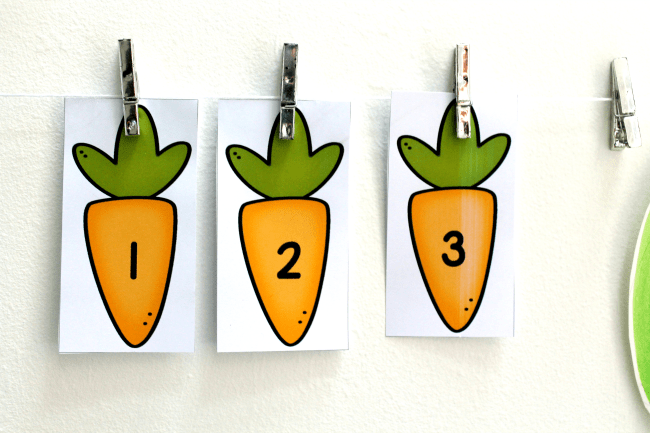
How to make a number line
Start by deciding how many numbers you want to cover on your line. For toddlers you might keep things simple with the numbers one, two and three.
For pre-schoolers you might have a line from one to ten and focus on the patterns within this range. With older children you can even go all the way from one to 100 and eventually extend the number line below zero when you progress to working with negative numbers.
A number line is a valuable visual tool for all ages of children to use, in many ways.
Where to place a number line
Hang up a length of string and add clothes pegs to pin up your numbers or stick up your numbers like posters along a wall, using sticky tac.
You’ll want to position the number line somewhere where you will see it easily and often. Place it where you do your play and math work.
You might also create versions for your outdoor play area and along corridors, so you have them to refer to regularly, wherever math conversations come up and wherever you want to practice counting.
What type of number line to use
You can make your numbers plain and simple – just a line of colourful digits – or theme them to the time of year, whatever thematic unit you’re working on or your children’s favourite thing, such as a line of dinosaurs or fairies or cats.
If you like, you can make a new number line for each season.
You might pair an art lesson, where you create the pictures, with the hanging up of the new number line.
Refreshing the number line helps children stay engaged with it and draws attention back to a forgotten line.
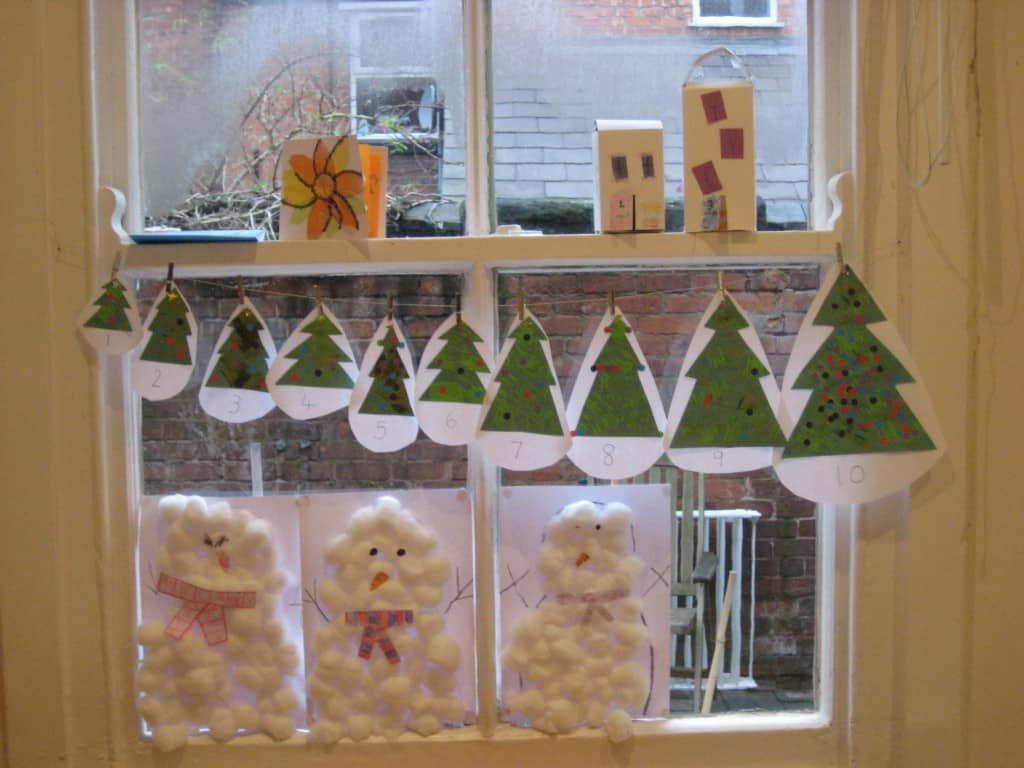
Ideas for number line designs
If you’d like to go all out and make artful number lines, you might like to use these ideas from NurtureStore:
For spring you could make 3D daffodils or ladybirds or ducklings
For summer you could make symmetrical butterflies
For autumn you could make leaf rubbings, leaf prints or pumpkins
For winter you could make snowflakes or Christmas trees or Valentine hearts
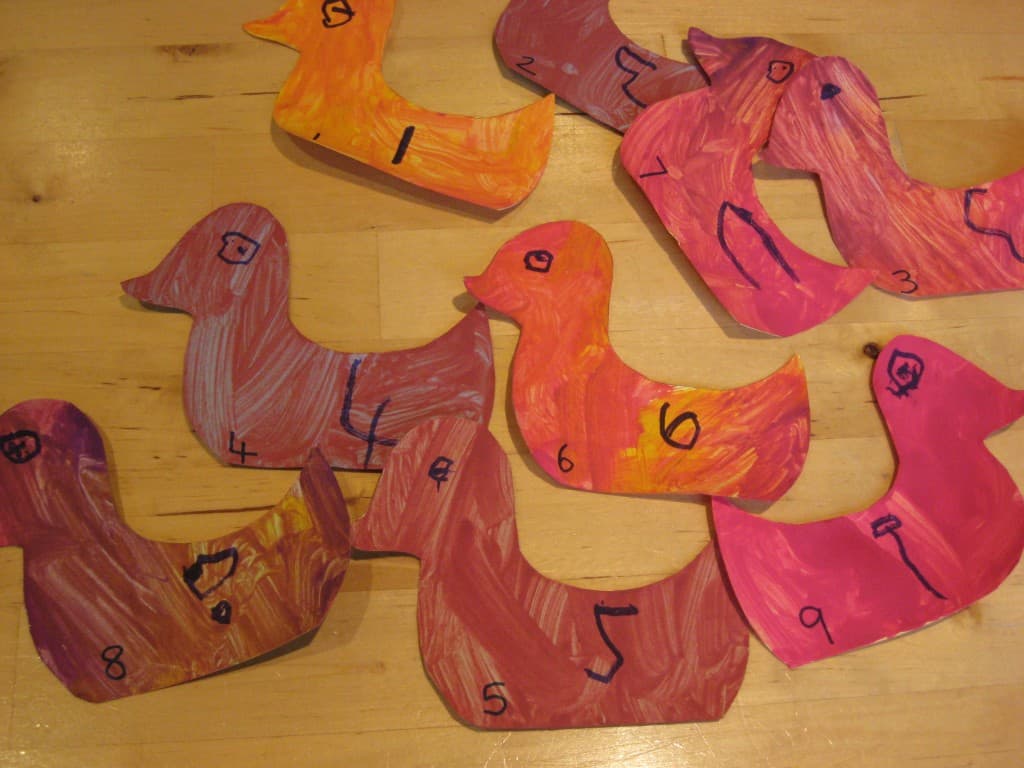
How to play number line games
There are many variations you can play with a number line, to suit children of different ages.
:: Very young children might simply point to each picture in turn and count out the numbers. If your child loves counting toys or plates at mealtimes, you can find the matching number on the line to help them learn the names and form of each digit.
:: Have a treasure hunt and see if you can find one car to place on the number one, two dolls to place on the number two, and so on.
:: You could work out how many cups you need for all the people at snack time and see if you can find the matching number on your line.
:: You could see if each child can find the number that matches their age.
:: You can ask your child to point to ‘one more than’ or ‘one less than’ a particular number. Use the line to count on from a particular number: “Can you start at 7 and count on 5?” “Can you start at twenty one and count down twelve?”.
These games help your children become versatile in their math skills: rather than always starting at one, and rather than only knowing “1, 2, 3, 4,…” as a rote pattern, they become able to manipulate and adapt their learning to any given situation.
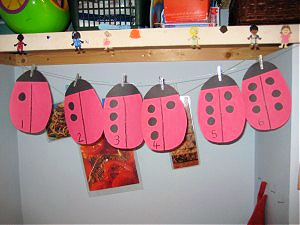
More ways to use number lines
:: You can use the number line to help you work out sums: counting up or down the line to answer addition or subtraction questions. The number line gives children a great visual reference to help them understand the meaning behind abstract maths questions.
‘What is three and another two?” can be counted out along the line. With older children, you can extend the number line to 100 and use it as an aid for children who are beginning to add and subtract two-digit numbers.
:: You can look out for patterns. Perhaps you can place a sticker on all the odd numbers or a paperclip on all the numbers that end in zero. This is a great way to support visual learning.
:: You can also use the number line as a board game. Lay your numbers out on the floor and have each player start a counter or button on number one.
Take turns to roll a die. Whatever number you roll has to be added to the number you are on. So, start on one, roll a six, and you get to jump to seven.
Keep taking turns to roll, add, and move, until every player makes it to 100. Or start at 100 and go backwards to practise subtraction.
Even with slightly older children, this kind of playful and ‘rapid fire’ mental maths helps them build confidence and speed.
Keep using number lines!
Remember to allow your children to refer to the visual number line as often as they want to and for as long as they need to, to help them build skills at their pace, to check their answers, and build confidence. They’ll give up the number line when they’re ready.
Transform your teaching with Fun Math
The Fun Math series gives you a math curriculum that is easy to teach and highly effective.
Children love these lessons because they are engaging and fun.
You’ll have a clear set of ready-made math lessons and activities that are simple to lead using our step-by-step lesson guides, and which children really understand.
Be the best math teacher and boost your children’s confidence and skills with Fun Math.
See more and transform your teaching here.


